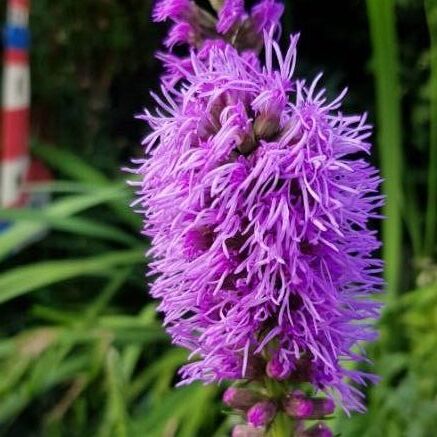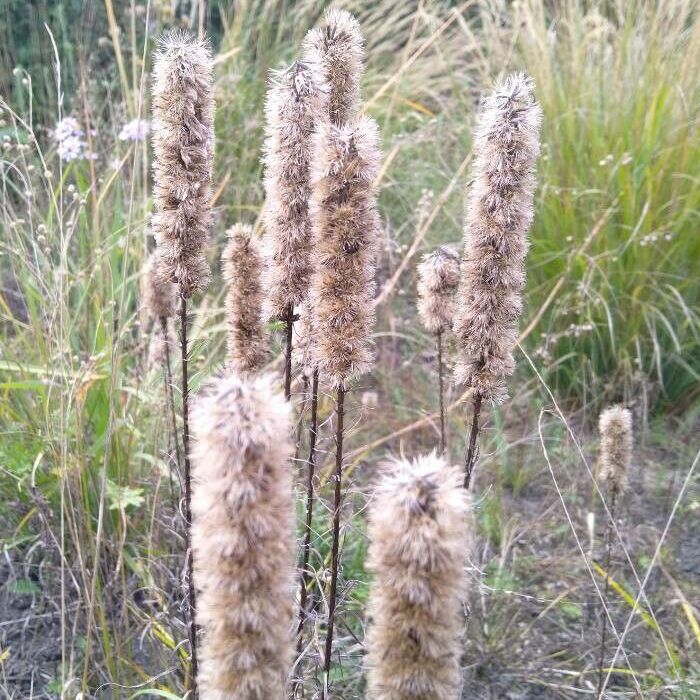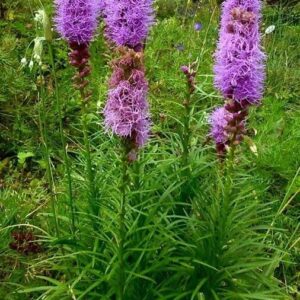Overview: Blazing star, commonly known as Liatris, is a striking perennial wildflower native to North America. It is well known for its tall, slender spikes of vibrant purple to lavender flowers that bloom from the top down, attracting a wide variety of pollinators such as bees, butterflies, and hummingbirds. Blazing star thrives in sunny, well-drained habitats like prairies, meadows, and open woodlands. Its grass-like foliage and upright growth make it a popular choice in native plant gardens and pollinator-friendly landscapes. In addition to its ornamental appeal, Blazing star is valued for its drought tolerance and role in supporting biodiversity.
Establishment and Care Instructions
- Site Selection: Choose a location that receives full sun (at least 6 hours of direct sunlight per day). Blazing star does not perform well in shade.
- Soil: Prefers well-drained soil—sandy or loamy types are ideal. It tolerates poor soils and is drought-hardy once established, but will suffer in waterlogged conditions.
- Water Requirements: Keep soil evenly moist until established. After establishment, Blazing star is drought-tolerant and requires minimal supplemental watering. Only water during extended dry spells.
- Pruning: Deadhead spent flowers if you want to prolong blooming and reduce reseeding. Cut back dead stalks in late fall or early spring to tidy up the garden.
- Fertilization: Typically does not require fertilization. Excess nutrients may cause floppy growth.
Special Features and Usage
- Unique floral structure: The flower spikes bloom from the top down, which is unusual among flowering plants.
- Pollinator Friendly: Blazing star is a high-value nectar source for monarch butterflies, bees, hummingbirds, and other pollinators.
- Native Species: As a native North American species, Blazing star supports local ecosystems, including specialist insects that rely on native flora. It integrates well into prairie restorations, wildflower meadows, and naturalized plantings.
- Sustainable Landscaping: Often used in bios wales, green roofs, and stormwater management designs due to its toughness, root structure, and low maintenance needs. A great candidate for native-plant-focused landscapes.









Reviews
There are no reviews yet.